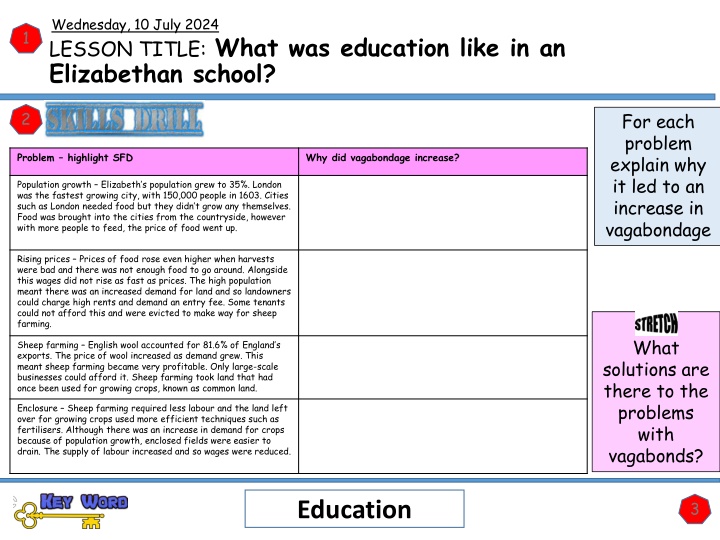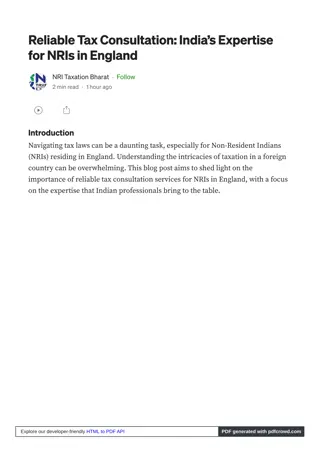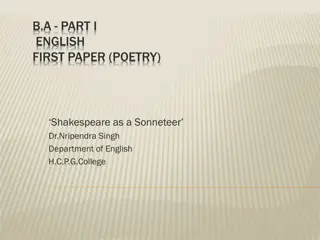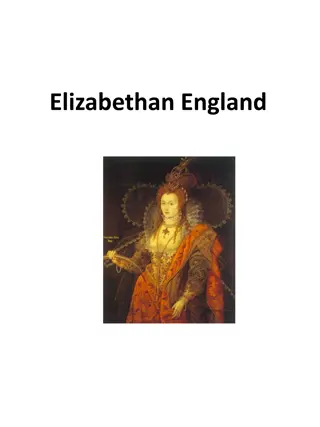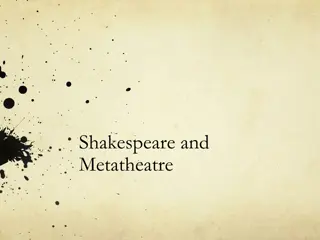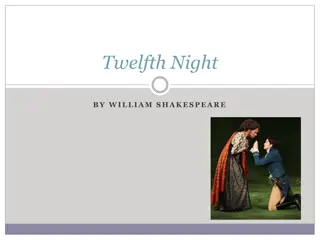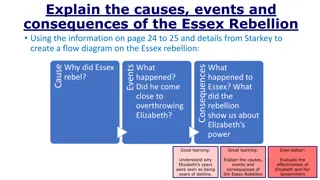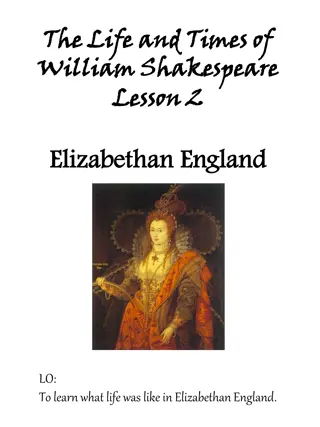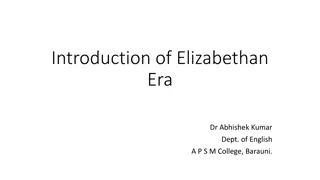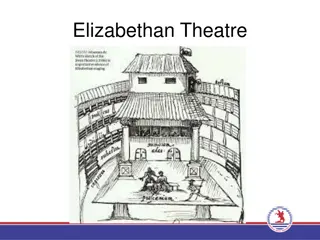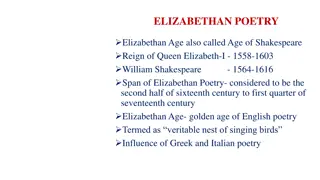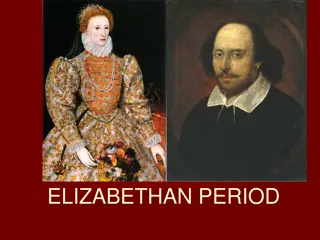Education in Elizabethan England: Understanding the Impact on Vagabondage
Explore the educational landscape of Elizabethan England and its effects on societal issues like vagabondage. The content delves into the challenges faced in schools, the reasons behind the increase in vagabondage, and potential solutions to address these issues.
Download Presentation

Please find below an Image/Link to download the presentation.
The content on the website is provided AS IS for your information and personal use only. It may not be sold, licensed, or shared on other websites without obtaining consent from the author.If you encounter any issues during the download, it is possible that the publisher has removed the file from their server.
You are allowed to download the files provided on this website for personal or commercial use, subject to the condition that they are used lawfully. All files are the property of their respective owners.
The content on the website is provided AS IS for your information and personal use only. It may not be sold, licensed, or shared on other websites without obtaining consent from the author.
E N D
Presentation Transcript
Wednesday, 10 July 2024 LESSON TITLE:What was education like in an Elizabethan school? 1 2 For each problem explain why it led to an increase in vagabondage Problem highlight SFD Why did vagabondage increase? Population growth Elizabeth s population grew to 35%. London was the fastest growing city, with 150,000 people in 1603. Cities such as London needed food but they didn t grow any themselves. Food was brought into the cities from the countryside, however with more people to feed, the price of food went up. Rising prices Prices of food rose even higher when harvests were bad and there was not enough food to go around. Alongside this wages did not rise as fast as prices. The high population meant there was an increased demand for land and so landowners could charge high rents and demand an entry fee. Some tenants could not afford this and were evicted to make way for sheep farming. What Sheep farming English wool accounted for 81.6% of England s exports. The price of wool increased as demand grew. This meant sheep farming became very profitable. Only large-scale businesses could afford it. Sheep farming took land that had once been used for growing crops, known as common land. solutions are there to the problems with vagabonds? Enclosure Sheep farming required less labour and the land left over for growing crops used more efficient techniques such as fertilisers. Although there was an increase in demand for crops because of population growth, enclosed fields were easier to drain. The supply of labour increased and so wages were reduced. 3 Education
What was education like in an Elizabethan school? To produce a piece of evidence for your GCSE grade Mastering To explain the different types of education children received in Elizabethan schools. Securing To describe what education was like in Elizabethan schools. Developing
Why educate the children? Although there was no national system of schooling, education was becoming increasingly valued in Elizabethan England. While attitudes to education were beginning to change, they still reflected the social hierarchy of the country. The existing social system was very important to Elizabethans and education was supposed to prepare you for a life within your class. Only a small percentage (often boys) went to school at all. However, some new thinkers and writers in the 16th century (known as humanists), believed that learning was important in its own right. They did not believe that people should be educated for just practical reasons. They studied the work of ancient philosophers and mathematicians to develop a better understanding of the world. To them education was important if people were to stop being superstitious and fulfil their potential. Protestants also believed that people should be able to read the Bible in their own language and not in Latin. This was so they could develop their relationship with God which encouraged more people to become literate. Also, as business and trade became more important, a basic education was required. Write a short answer to the following question: What is the purpose of education in Elizabethan England?
Different aspects of Elizabethan education There is a table on slide 5 you can complete Read the information the answer the following questions; Universities Elizabethan schoolboys normally attended Grammar school until they reached the age of fourteen when they continued their Elizabethan education at a University. Oxford University or Cambridge University were the most popular choices. Teachings from various faculties were available to University students. The University Faculty of the Arts - The Arts would have included Philosophy. The University Faculty of Liberal Arts would have included Geometry. The University Faculty of Theology - religious education. The University Faculty of Medicine including the study of Hippocrates & Galen. University Faculty of Law Wealthy Upper classes would have also toured the major cities of Europe. Grammar Schools Intelligent working and middle-class boys received a traditional classical, literary education that would act as a passport to good professional jobs in commerce, the law or the Church. Latin was the basis of a grammar school education. During the reign of Elizabeth I the number of grammar schools increased. 42 grammar schools were founded in the 1560s and 30 more in the 1570s. Schools were now offering education that were not ran by the Church. Protestantism emphasised the importance of education as a means to encourage ordinary people to read the Bible and also help the poor and disadvantaged. Successful students of humble background were even able to apply for places at the prestigious universities of Oxford and Cambridge. Dartford Grammar School, founded in 1576, provided a small number of boys from ordinary backgrounds to access higher education. 1. Why did opportunities for education increase during Elizabethan times? How did attitudes towards education change during Elizabethan times? What were Petty schools and who attended them? What did you learn at grammar schools and who attended? 2. 3. Petty Schools In the Elizabethan era, boy who were aged five to seven were sent to what was then referred to as a "petty school (boys) or a "dame school (girls). These schools were in fact not actual schools but the house of a well-schooled housewife who taught children in exchange for a small fee. In these petty schools children were taught how to read and write using English, they are also to learn the Christian faith as well as lessons on proper behaviour. 4. How would education change society in Elizabethan England?
Different aspects of Elizabethan education 1. Why did opportunities for education increase during Elizabethan times? 2. How did attitudes towards education change during Elizabethan times? 3. What were Petty schools and who attended them? 4. What did you learn at grammar schools and who attended? How would education change society in Elizabethan England?
What was education like under Queen Elizabeth? Work your way through these questions DEVELOPING Describe how the education boys and girls received was different. Boys would be taught However, girls would be taught SECURING Explain how education varied depending on your place in society. The level of education you received differed if you were as you would get This is different too MASTERING To what extent did Elizabeth improve education whilst she was Queen? I think Elizabeth improved education as However, it could also be argued that she didn t improve education as
1. Who would be educated at home? 2. How were children of labourers and the poor educated?
